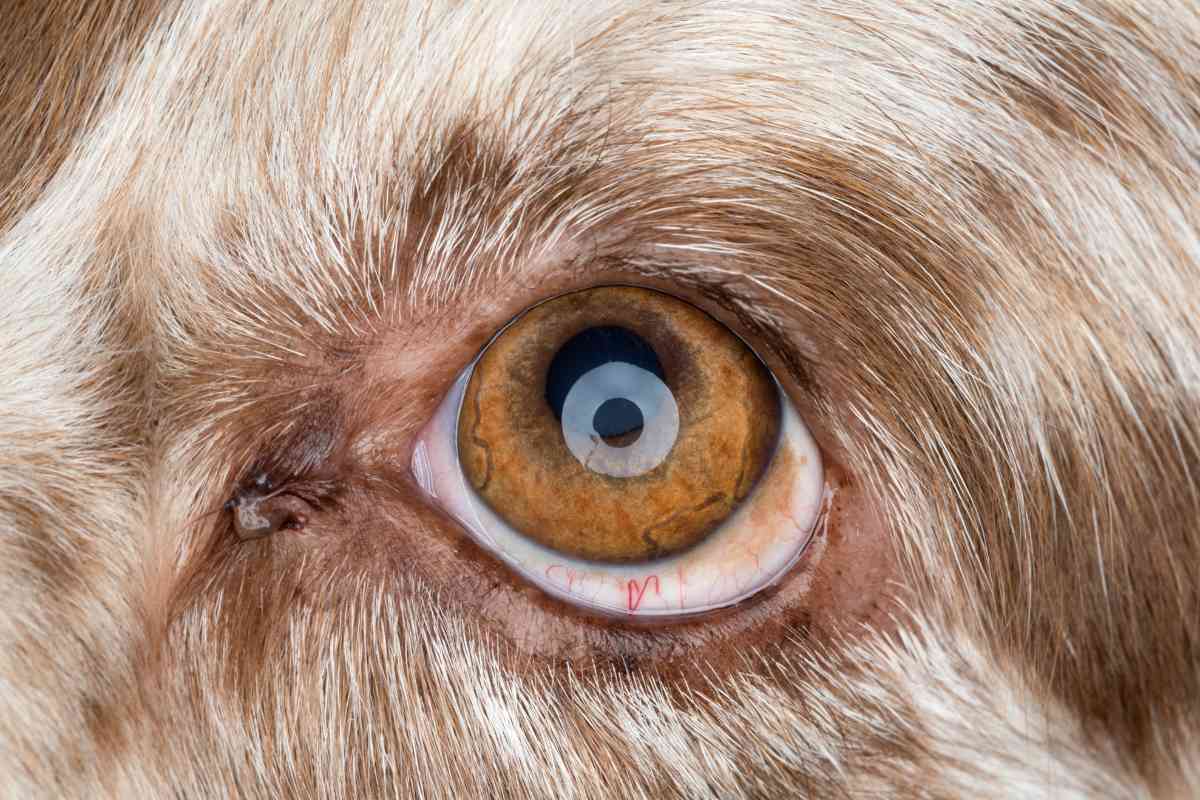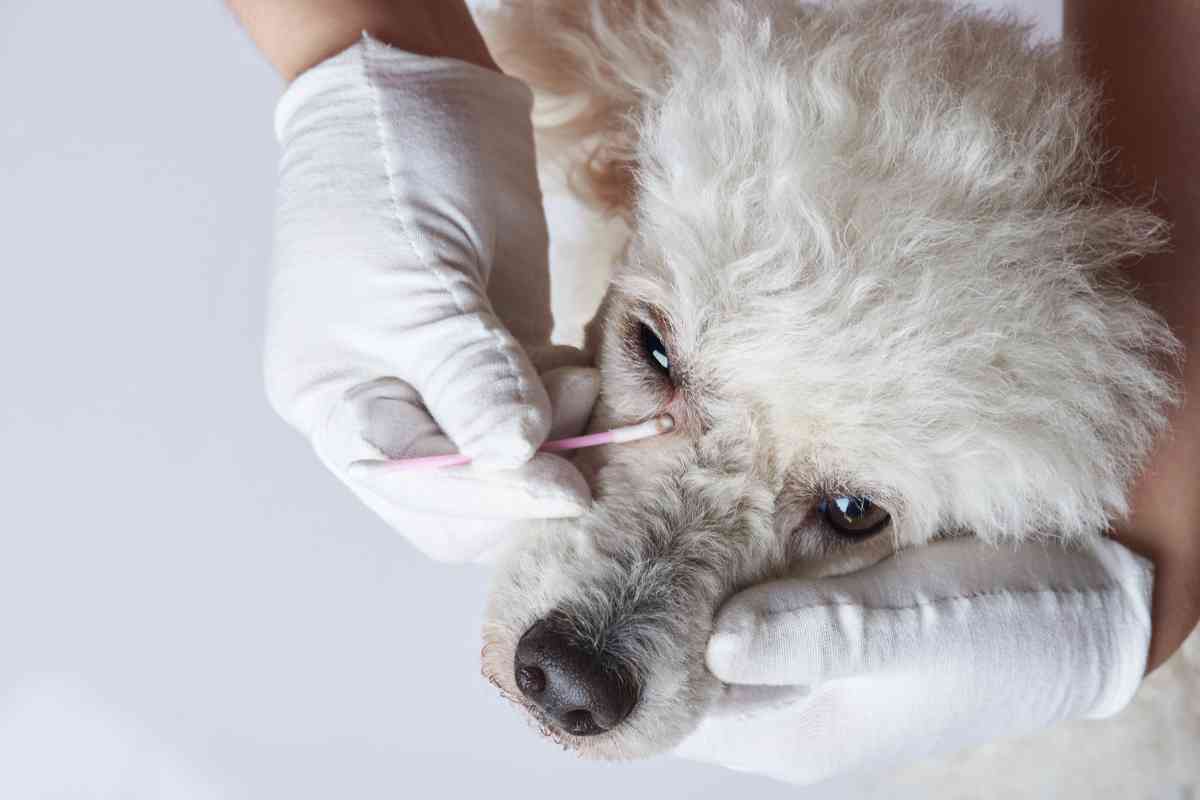Can Dogs Get Pink Eye From Humans? The Surprising Answer!
Like any other pets, dogs are also susceptible to contracting certain illnesses from humans. So, can dogs get pink eye from humans? We have the answers.

Can dogs get pink eye from humans?
If the dog’s eyes come into direct touch with a human pink eye or encounter its secretion, the dog may contract pink eye from humans. Therefore, it is advisable to shield the members of your family, including your dog, from developing pink eye if you or any family member has it.
A pink eye is an eye infection or inflammation of the conjunctiva, the membrane lining the white part of the eyeball.
When the conjunctiva’s microscopic blood vessels become inflamed, they appear red, puffy, and pink. Conjunctivitis, often known as pink eye in dogs, can attack all three eyelids.
Dogs, unlike humans, have a “third eyelid,” a layer of extra tissue that travels across the eye’s surface to give additional protection and lubrication. Additionally, the conjunctiva and the third eyelid can become inflamed and damaged.

After I performed thorough research and consultations with various veterinary agencies, I found out that some dog breeds are more susceptible to contracting conjunctivitis from humans due to the vulnerability of their face, allergies, and easy contraction through airborne irritants.
However, conjunctivitis can affect any dog, regardless of its breed. The following are some examples of susceptible dog breeds:
- Hounds
- Retrievers
- Pug
- Poodle
- Pekingese
- Labrador
Can Dogs get Pink Eye from Humans?
As we had discussed earlier, pink eye may occur in dogs and other animals.
When it comes to dogs, they can acquire pink eye and exhibit several of the symptoms that are the same as humans, although their eyes are considerably different from those of humans. But when it comes to dogs infecting humans with pink eye, dogs rarely cause pink eye in humans.
That notwithstanding, it essential to take precautions to prevent your family members, including your dog, from contracting the inflammation if you or anybody else in the family does.
Types of Pink Eye that Dogs can Contract from Humans

Bacterial Conjunctivitis
Like human conjunctivitis, bacterial pink eye in dogs is challenging to control. This is because bacteria are attracted to the eyes and are everywhere.
Additionally, through human and dog interaction, human beings may also contract bacterial conjunctivitis by mistakenly touching or patting the dog’s face and having hands infected by bacteria.
To prevent your dog from acquiring bacterial pink eye from you, ensure that you clean your hands before you pat or touch the dog’s face. Keep your dog’s eyes and the surrounding area clean, and ensure to clean up any secretion or crust from the eyes.
Typically, your veterinarian will prescribe antibiotic ointments or eye drops if your dog is found to have bacterial conjunctivitis.
Since it may be difficult to use eye drops on dogs, get advice on administering eye drops to your dog from your veterinarian.
Discuss alternative therapies so the vet can decide on the right prescription for your dog. Most antibiotics are available in various dosage forms, including eye drops, ointments, and pills.
Allergen Conjunctivitis
Even though dogs are less likely to contract allergen conjunctivitis from humans, it is still possible through the kind of meals you offer the dog and how often you expose it to the dog’s source of allergic reactions.
Therefore, ensure you are taking precautions to keep your home free of mold, dust, dander, pollen, and other allergens that might cause a reaction.
Learn to recognize how food, grass, plants, and perfumes irritate your dog’s allergies. Like humans, ensure your dog’s eyes are free of dust, debris, and other irritants.
If allergies result in pink eye, the veterinarian will likely provide steroid eye drops, artificial tears, antihistamines, and anti-inflammatory medications. Cold treatment will help soothe the itching when a dog has allergic conjunctivitis.
Viral Conjunctivitis
Dogs can also acquire viral conjunctivitis from humans since the viral eye infection is as contagious as the bacterial pink eye.
Similarly, viral conjunctivitis can develop due to a human cold or other respiratory illness that dogs can contract and is likewise challenging to prevent.
The easiest way to avoid viral conjunctivitis in dogs is to ensure they are generally healthy and provide them with medications that protect them from contracting illnesses from humans.
However, if your dog has viral conjunctivitis, the recommended course of therapy will include steroid eye drops and artificial tears to keep the eyes free of crust or discharge.
Additionally, this will lessen your dog’s suffering when the effects of the drugs.

Signs and Symptoms of a Dog Pink Eye
You can identify cases early by keeping an eye for typical conjunctivitis signs, making treatment more straightforward and improving your dog’s overall health.
As we discussed earlier, most of the signs and symptoms experienced by humans due to conjunctivitis are the same as those of dogs. Therefore, treatment will be almost the same.
The common signs and symptoms that indicate the presence of pink eye in dogs are; eye redness, a clear or mucous eye discharge, and inflammation around the eyes.
Additionally, Your dog may display discomfort that is not yet obvious to you if you observe them licking or pecking at their eyes, squinting, or blinking more frequently than usual.
These symptoms can affect one or both eyes and occasionally co-occur with other symptoms such as sinus drainage, coughing, or sneezing.
Diagnosis and Treatment of dog pink eye
In addition to thoroughly inspecting your dog’s eyes and eyelids, your veterinarian will also want to give him an essential physical examination to ascertain his health.
Additionally, the veterinarian can perform a fluorescein eye stain exam to look for corneal abrasions, Schemer’s tear test to assess the dog’s tear generation, and a glaucoma test.
They might also do several blood tests to check for underlying diseases.
Regarding the treatment, the cause of conjunctivitis will ultimately determine the treatment plan that your veterinarian recommends.
If it is determined that your dog has pink eye, the veterinarian will probably prescribe a fungicidal or bacterial ointment.
Additionally, if a foreign substance is causing discomfort and swelling, your dog may need to be given general anesthesia to remove the substance without endangering the eye’s health.
The Dog Pink Eye Treatment Cost
Conjunctivitis treatment costs cover the expense of a vet visit and the diagnostic exams and medications required to treat the pink eye infection.
Since dog pink eye is a common condition, the cost of treatment shouldn’t be prohibitive.
Still, it may fluctuate depending on variables such as location and the degree or level of the infection.
Regarding location, I found out that urban areas have higher treatment costs than rural areas, creating a distinction between the treatment costs. As for the level of infection, the more severe the pink eye, the more you will have to pay for the cost of treatment.
Key Takeaways
- Dogs can contract pink eye from humans due to their interactions
- Most conjunctivitis symptoms experienced by humans are the same in dogs
- The cost of treating dog pink eye depends on your location and degree of infection
- Even though pink eye affects all dog breeds, some breeds are susceptible to getting the infection